The Death Penalty in 2016: Year End Report
Posted on Dec 21, 2016
- PRESS RELEASE
- INFOGRAPHIC: "The Death Penalty in the U.S."
- GRAPHICS FOR POSTING ON SOCIAL MEDIA
- 2016 SENTENCING DATA
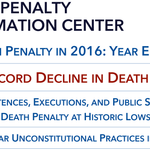
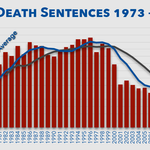

PRESS RELEASE Top
Death Sentences, Executions Drop to Historic Lows in 2016
(Washington, D.C.) Death sentences, executions, and public support for capital punishment all continued historic declines in 2016. American juries imposed the fewest death sentences in the modern era of U.S. capital punishment, since the Supreme Court declared existing death penalty statutes unconstitutional in 1972. The expected 30 new death sentences in 2016 represent a 39 percent decline from last year’s already 40-year low of 49. The 20 executions this year marked the lowest number in a quarter century, according to a report released today by the Death Penalty Information Center (DPIC). National public opinion polls also showed support for capital punishment at a 40-year low.
“America is in the midst of a major climate change concerning capital punishment. While there may be fits and starts and occasional steps backward, the long-term trend remains clear,” said Robert Dunham, DPIC’s Executive Director and the author of the report. “Whether it’s concerns about innocence, costs, and discrimination, availability of life without parole as a safe alternative, or the questionable way in which states are attempting to carry out executions, the public grows increasingly uncomfortable with the death penalty each year.”
For the first time in more than 40 years, no state imposed ten or more death sentences. Only five states imposed more than one death sentence. California imposed the most (9) followed by Ohio (4), Texas (4), Alabama (3) and Florida (2). Death sentences continued to be clustered in two percent of counties nationwide, with Los Angeles County imposing four death sentences, the most of any county. But death sentences were down 39 percent, even in those two-percent counties.
This year’s 20 executions marked a decline of more than 25 percent since last year, when there were 28 executions. Only five states conducted executions this year, the fewest number of states to do so since 1983. Two states – Georgia, which had the most executions (9), and Texas, which had the second highest number (7) – accounted for 80 percent of all executions in the U.S. Although Georgia carried out more executions than at any other time since the 1950s, juries in that state have not imposed any new death sentences in the past two years.
State and federal courts continued to strike down outlier practices that increased the likelihood a death sentence would be imposed. The United States Supreme Court struck down practices in Florida, Arizona, and Oklahoma that had disproportionately contributed to the number of death sentences imposed in those states. And state courts in Florida and Delaware ruled that portions of their statutes that permitted the death penalty based upon a non-unanimous jury vote on sentencing were unconstitutional.
America’s deep divisions about capital punishment were reflected in voters’ action at the ballot box this year. Voters in California and Nebraska voted to retain the death penalty and Oklahoma voters approved a constitutional amendment regarding capital punishment. At the same time, prosecutors in four of the 16 counties that impose the most death sentences in the U.S. were defeated by candidates who expressed personal opposition to the death penalty or pledged to reform their county’s death penalty practices. In Kansas, pro-death penalty groups spent more than $1 million to defeat four state supreme court justices who had voted to overturn several death sentences, but voters retained all four justices.
DPIC’s review of the 20 people executed in 2016 indicated that at least 60 percent of them showed significant evidence of mental illness, brain impairment, and/or low intellectual functioning. This suggests that, in spite of the constitutional requirement that the death penalty be reserved for the “worst of the worst” offenders, states continued to execute prisoners whose mental illness or intellectual disabilities are similar to impairments the Court has said should make a person ineligible for the death penalty.
For an analysis of the death penalty in Texas in 2016, read TCADP’s “Texas Death Penalty Developments in 2016: The Year in Review” at https://tcadp.org/wp-content/uploads/2016/12/Texas-Death-Penalty-Developments-in-2016.pdf
DPIC provides information and analysis and tracks data on the death penalty, but does not take a position on capital punishment.
###
The Death Penalty Information Center (www.deathpenaltyinfo.org) is a non-profit organization serving the media and the public with analysis and information on issues concerning capital punishment. DPIC was founded in 1990 and prepares in-depth reports, issues press releases, conducts briefings for the media, and serves as a resource to those working on this issue.
INFOGRAPHIC: “The Death Penalty in the U.S.” Top
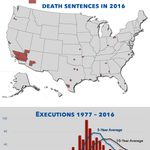
GRAPHICS FOR POSTING ON SOCIAL MEDIA Top
(Right click on “Download” and select “Save Linked File” or “Save Target File”)


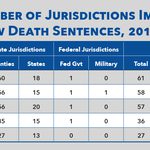


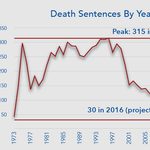
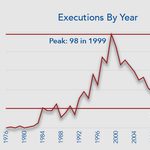
2016 SENTENCING DATA Top
2016 Sentencing Data by Name, Race, and County.